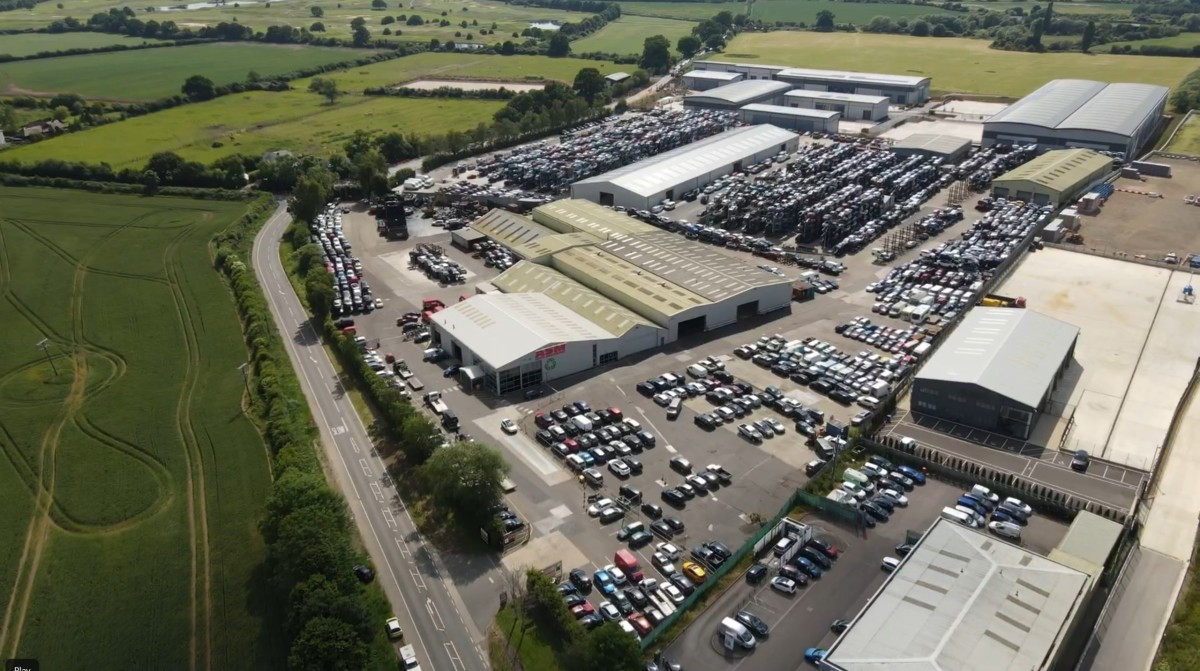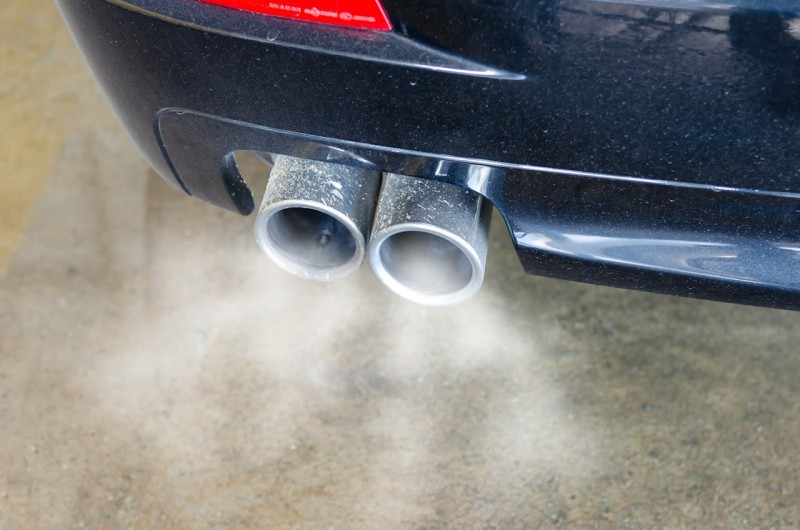
Ever wondered what carbon dioxide (CO2) emissions are generated by your vehicle? You might not be aware that CO2 emissions can influence the amount of car tax you pay, as well as the rate of company car tax for fleet users.
Although there is a growing demand for hybrid or electric vehicles (At the end of 2024 there were more than 1,360,000 battery powered electric vehicles in the UK), most cars on the road today still have petrol or diesel engines. When your engine is running, your vehicle’s fuel mixes with the air in the engine to generate the power needed to drive. Because petrol and diesel naturally contain a lot of carbon, burning them produces carbon dioxide gas which is then emitted into the atmosphere via the exhaust pipe.
Before any car, van, or other vehicle type is put on sale, its fuel economy and CO2 emissions levels are tested and measured. The levels of CO2 emitted by each vehicle are recorded as units of g/km (grams per kilometre) which are then used to calculate the amount of vehicle tax you as the owner will need to pay.
Car CO2 emissions
Transport is said to be the biggest contributor to CO2 emissions in the UK, with 29% of all Carbon Dioxide emissions in 2023 coming from the transport sector. With the focus shifting towards sustainability and creating more environmentally friendly models, many people are considering switching their current vehicle to a lower emission model.
You can check the CO2 emissions of your current vehicle and which tax bracket it falls under using the V5C document.
CO2 emissions and vehicle tax
But what is a good CO2 emission for a car? Well, in terms of vehicle tax, generally speaking the lower the CO2 emissions, the cheaper your vehicle tax will be.
Any vehicles registered between 1st March 2001 and 31st March 2017 will have their tax rates based solely on their CO2 emissions. Any car with an emissions rating of less than 100g/km is exempt from tax, while vehicles with higher CO2 emissions will be taxed accordingly.
Vehicles registered on or after 1st April 2017, are now taxed on a newer system. Any car with an emissions rating of 0g/km CO2 (electric and hydrogen powered vehicles) are exempt from tax. Hybrid vehicles or cars with super-efficient petrol or diesel engines that produce 50g/km or less of CO2 emissions, also qualify for a reduced tax rate. For the first year, other vehicles will be placed into one of thirteen tax bands and be taxed based on CO2 emissions. This is often included in the purchase price of the car. After the first year, drivers will pay a flat fee of £165 per year.
What cars emit the most CO2?
While CO2 emissions will vary from model to model, generally cars with larger engines, higher fuel consumption, and older technology will produce higher levels of CO2. These include larger SUVs and trucks, where their size and weight can cause higher CO2 emissions. Similarly, high performance sports or luxury cars which make use of a bigger engine to increase speed or comfort will also produce more CO2 than other types of cars.
What causes high CO2 emissions in cars?
High CO2 emissions in cars can be due to several factors, including:
- Fuel combustion
- Engine size and power
- Driving behaviour
- Lower fuel efficiency
- Vehicle weight
How can I reduce CO2 emissions in my petrol car?
As previously mentioned, CO2 emissions can be influenced by numerous factors, some of which are within your control as a driver. Top tips to reduce your CO2 emissions include:
- Driving considerately and avoiding sudden acceleration as much as possible.
- Monitoring your tyre pressure.
- Reducing the overall weight of your vehicle where possible by removing things like roof racks when they’re not being used.
- Switching the engine off when you can rather than leaving it running.
- When possible, using premium over regular fuel.
- Change your cars oil and air filter regularly.
- Ensure your vehicle has regular services and maintenance checks.
Proactively trying to reduce your car’s CO2 emissions will not only benefit your bank balance. You’ll also be having a positive impact on the environment and getting more miles per gallon.
What is classed as a low emission car?

A low emission car or vehicle is anything that produces lower levels of carbon dioxide and other greenhouse gases compared to traditional petrol- or diesel-powered cars. Common types of low emission cars include electric vehicles such as Teslas, hybrid, or plug-in hybrid cars. Fuel cell vehicles (FCVs) are also classed as low emission cars as they generate electricity through a hydrogen fuel cell chemical reaction.
Should you choose a low CO2 emission car?
There are several benefits to choosing a low CO2 emission car if you can.
Environmental impact
Naturally, low CO2 emission cars produce fewer greenhouse gases, which can help to improve your carbon footprint as an individual. Cars with low CO2 emissions also have a cleaner combustion process and better fuel efficiency which reduces emissions of other harmful pollutants, such as nitrogen oxides (NOx), particulate matter (PM), and volatile organic compounds (VOCs), all of which lead to poorer air quality.
Government incentives
If you are considering purchasing a low emission vehicle, it’s well worth looking at the various government incentives that you could be eligible for. These can include anything from tax credits to reduced registration fees. For example, the Electric Vehicle Homecharge Scheme Grants are available for drivers planning to buy or who already own an electric vehicle and can help to reduce the installation costs of an electric vehicle charger by up to 75%. Applying for government incentives is a great way to help reduce the overall cost of purchasing and owning a low emission car.
Higher fuel efficiency
All low emission vehicles, but particularly electric or hybrid vehicles, have a higher fuel efficiency compared to higher emission vehicles. This can help owners to reduce their fuel costs throughout their vehicle’s lifetime and reduce the impact that the fluctuations of fuel prices can have.
Advanced technology
Choosing a low emission car also means you’ll be benefitting from the latest technological advancements in the automotive industry. For example, since they were first developed electric vehicles have seen improvements in their battery range, charging infrastructure, and overall performance. This means that they’re not just great ‘low emission cars’ to own, but also great cars to own in their own right.
Scrap your old car with ASM Auto Recycling
If you currently own an older, or less efficient vehicle, it might be time to consider scrapping your car in favour of an alternative low CO2 emissions vehicle.
At ASM Auto Recycling, we’ve been recycling older, inefficient vehicles for more than 40 years. As a permitted Authorised Treatment Facility (ATF) we process all end-of-life vehicles in our state-of-the-art vehicle dismantling facilities to responsibly remove and store potential toxins and set aside used car parts that can be reused again on other vehicles.
Better still, we can pay you an industry competitive price for your scrap vehicle. It doesn’t matter whether it has failed its recent MOT or is even a non-runner, we offer a salvage car collection service from our main hub in Thame, Oxford, retrieving your car at a time and location to suit you.
With prompt collection and immediate payment, discover your car’s scrap value today using our free car scrap valuation calculator.
]]>What does an air filter do in a car?
Whether you drive a petrol or diesel vehicle, the fuel needs to combine with oxygen in order to work effectively. Air filters ensure that any kind of debris, pollen or dirt in the air does not get into the vehicle’s engine. The cleaner the air is that reaches the engine the more efficiently the car will run. Over time air filters get dirty and become less effective. If air filters aren’t changed regularly, the engine is more likely to be damaged.
Air filters are made of paper, cotton or foam, and are fitted into a housing within the engine bay. These housings are usually very accessible, making changing a car air filter quite a simple job for a car owner.
When to change the air filter on a car
Opinions vary on when you should replace your air filter – every 30,000 miles, 3-4 years, 15,000 miles, or every year – but the important thing is to check it regularly. If you have been doing a lot of driving, or the weather has been particularly dry, air filters get clogged more quickly. The area where you drive is also a factor. If you live in a rural area you might do more driving on dirt tracks or muddy roads, or if you live in a city, where the air is more polluted, the life of an air filter can be shorter. Your car’s maintenance manual will tell you how often the air filter should be changed.
Air filters are among those parts that have to be replaced regularly in your car.
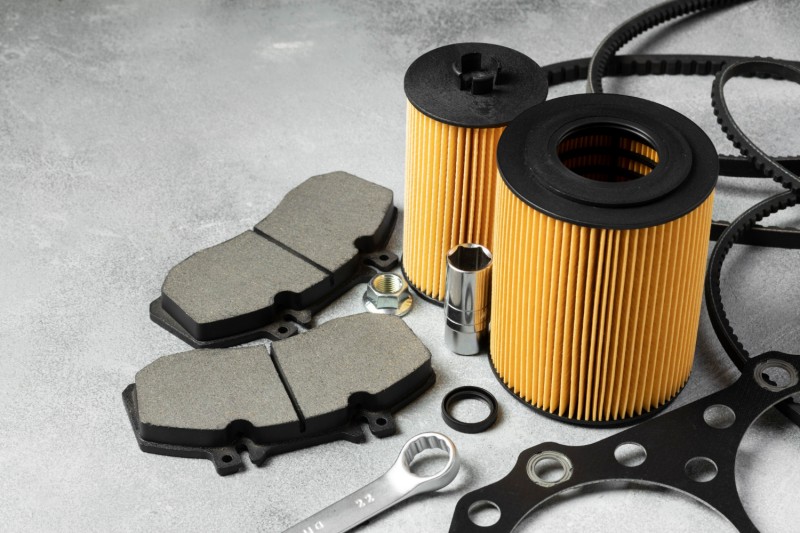
How to replace a car air filter
You can pick up new air filters for between £10-20 at most automotive spares shops.
1. Gather your tools
You should only need a flat blade or Phillips screwdriver, a clean damp cloth and maybe a hand-held vacuum cleaner.
2. Locate the air filter housing
Open the bonnet. Locate the air filter housing (it should be quite easy to get to). In modern cars it is usually located near the top or side of the engine. Release the retaining clips or use the screwdriver to unscrew the fixings.
3. Remove the old air filter
Lift off the cover of the housing and remove the old air filter (note down which way the filter is facing, as it will need to be replaced in the same way).
4. Clean the air filter housing
Wipe the dirt from the housing with a damp cloth, or use the vacuum cleaner if there is a considerable amount of debris. Don’t use compressed air to clean out the filter box assembly.
5. Install the new air filter
Place the new air filter into the filter housing and put the filter cover back on. Secure it in place using either the screws or the retaining clips.
6. Check all connections are secure
Ensure that the air intake and vacuum hoses don’t have any cracks in them, and that the hose connections to the filter housing cover are secure. Shut the bonnet and you’re done!
That’s the whole job of changing a car air filter.
Benefits of changing a car air filter
Replacing a car air filter will have a number of benefits for your vehicle.
Increasing fuel efficiency
The most immediate effect of changing your car’s air filter will be to increase your fuel mileage. You should see an improvement of 5-10% in fuel efficiency, because a clean air filter improves air flow to the engine.
Lower emissions
The amount of CO2 your vehicle emits is going to be significantly reduced with a new air filter. Clogged air filters not only reduce air flow to your engine, but also cause an imbalance in the air-fuel mixture and fouled spark plugs.
Extending engine life
Any dirt or debris that gets into engine parts like cylinders and pistons will negatively affect engine performance. So changing the air filter will help to prolong the life of your engine.
Find your replacement car parts at ASM
With a wide range of used car engine parts available from ASM Auto Recycling, we can help with your search for replacement parts for your car. In our used car parts store you can search by your car registration, make and model and find all the parts that we have available for your vehicle. Plus, we offer a 90-day parts peace of mind guarantee for fitting used replacement engines or car parts purchased from ASM.
]]>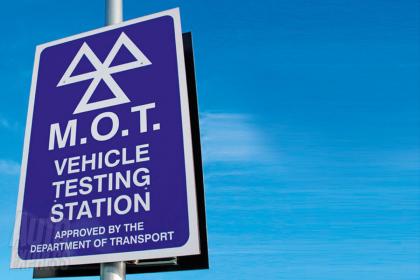
The MOT (Ministry of Transport) test is Britain’s annual test of vehicle safety, roadworthiness and emissions. The MOT is a legal requirement in the UK, and if you own a car above a certain age, you’ll need to have regular MOTs. So, we have created an MOT guide that helps you to better understand what the MOT involves, when your MOT is due and what happens if your car fails.
Why your car requires an MOT certificate
The MOT test is designed to ensure that your vehicle meets road safety and environmental standards: as such, it’s something that must be carried out annually.
You’re legally required to get an MOT for a vehicle either on the third anniversary of its registration, or the anniversary of its last MOT, if the vehicle is over three years old.
There are a few vehicles that need to be tested having been on the road for only a year. These include ambulances, taxis and private passenger vehicles with more than 16 passenger seats.
What is the earliest date your vehicle can get an MOT?
An MOT is certified for a year and the date it runs out will be printed on the most recent certificate. You can book an MOT up to a month (minus a day) before the certificate runs out and you’ll still be permitted to keep the same renewal date.
You cannot legally drive your vehicle on the road without a valid MOT certificate, so if your MOT has expired you will be prosecuted if caught by the police. There are two exceptions to this:
- If you’re driving to or from somewhere to have the vehicle repaired
- If you’re heading to a pre-arranged MOT test
To check whether your vehicle requires an MOT test or check its MOT history, you can do so on Gov.UK.
How do you book an MOT for your vehicle?
MOT’s must be carried out at an approved MOT test centre. An approved test centre will show the blue sign (shown above) with three white triangles — the symbol that represents certification.
What is the most a garage can charge for an MOT?
There is a maximum amount that an MOT test centre can charge. Check what the current maximum fee is. Don’t pay more than this. VAT also cannot be charged on an MOT fee.
What happens at an MOT?
A number of important parts on your vehicle will be checked to ensure that they meet the legal standards. These include the brakes, fuel system, lights, windscreen wipers and exhaust system. However, an MOT doesn’t cover the condition of the engine, the clutch, or the gearbox.
Understanding the result of your vehicle’s MOT
The MOT result is presented as either a pass or fail. If your car fails the test, you’ll be given a list of things that need to be repaired before it can pass. If it passes, you’ll be given an MOT certificate from the test centre and the result of the test will be recorded in the national MOT database.
You’ll also notice that your MOT certificate will show the mileage recorded at the current and previous three test passes. It’s important to have a quick look at these figures, which are recorded as the ‘odometer reading and history’, as you need to report any mistakes on the reading to the MOT centre within seven days in order to obtain a replacement certificate.
What is the most common fail on an MOT?
It is easy for a car to fail an MOT. Faulty headlight bulbs, inadequate suspension, worn brake pads and tyres with low tread depth are common reasons for failure. There are some very simple ways to fail that drivers may not even be aware of. For example, screen wash that isn’t topped up or warning lights on the dashboard will see your car being failed immediately. Believe it or not, a car full of rubbish can mean a failure before the test even starts – this is because an MOT tester needs to be able to easily access every part of your vehicle.
What happens if your vehicle fails an MOT?
If your vehicle fails, you will be given a ‘Refusal of an MOT test certificate’ document from the test centre, and the result will be recorded in the MOT database.
In the result of a fail, you can take your vehicle away if your MOT certificate is still valid. If your MOT has run out, you can still drive your car if it is to take it to a garage to have the failed defects fixed. Often you can have them fixed at the garage where the MOT test took place. If a dangerous defect is found during the MOT, and you want to move the vehicle, you will have to get it towed.
Your car insurance and tax will become invalid as soon as your car fails an MOT, or your MOT expires.
What is an advisory?
Whether your car passes or fails its MOT, your test certificate may include ‘advisories’ – these are issues with the vehicle which the examiner has noted that need addressing. They are not in themselves enough to fail an MOT, but if left unresolved they may do in the future.
What happens if you want to appeal your MOT?
You can appeal against the result of an MOT test. Usually this would be if you think it should have passed, but you can also appeal if you think the vehicle should have failed. You do this through the Driver and Vehicle Standards Agency (DVSA), by filling in a complaint form and sending it to the DVSA within 14 working days of the test. You will be offered an appointment within five days to recheck your vehicle - you’ll need to pay the full test fee again - and the DVSA will send you an inspection report listing any vehicle defects and advisory changes that need to be made.
If you want to, you can take your own action against an MOT test centre through trading standards, legal proceedings or through reporting the centre to the police. The DVSA won’t help you in any way if you decide on this course of action.
What can I be fined for driving without a valid MOT certificate?
You can be fined £1,000 if you are caught driving a vehicle without a valid MOT. However, you are more likely to be given a fixed penalty notice fine of £100, which has to be paid within 28 days.
If your car failed with a major fault and has been classed as dangerous to drive, you can be fined up to £2,500 if you are caught driving without a valid MOT. In these circumstances you could be banned from driving for six months and be given penalty points on your licence.
Keep your car in good condition with parts from ASM
One of the most effective ways to ensure your car is in great condition – and has a better chance of passing its MOT – is through replacing those older parts. In our used car parts store you can search by your car registration, make and model and find all the parts that we have available for your vehicle. You can also use our parts enquiry form.
]]>What do you need to look out for when buying part-worn tyres, and what are the warning signs?
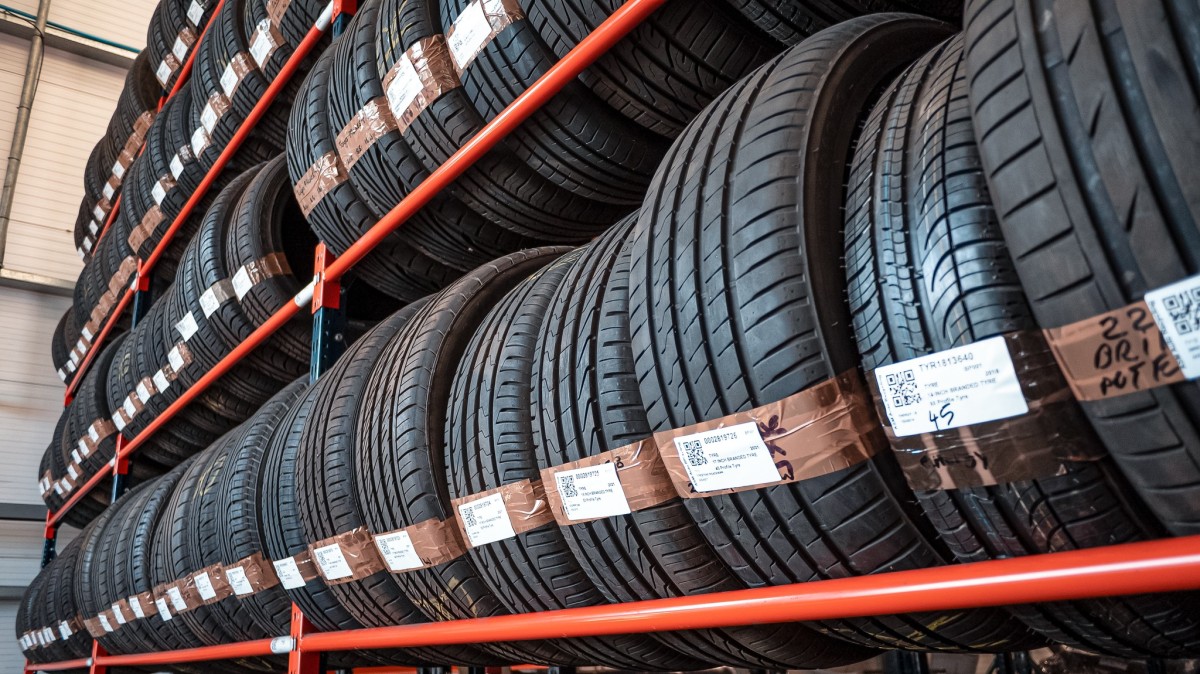
What are part-worn tyres?
For some years, the part-worn tyre has been a popular alternative to the (now largely extinct) remoulded tyre, which involved recladding a worn-out tyre with new rubber. In contrast, a part-worn tyre is simply a tyre which has previously been used on another vehicle. These are often taken from a vehicle before it is scrapped, if the tyres are deemed roadworthy and valuable enough to be salvaged.
Are part worn tyres legal in the UK?
Part-worn tyres or second-hand tyres are perfectly legal – if they are kept to the minimum standard. This means that the tread depth should be at least 1.6mm – although it is recommended that tread depth shouldn’t go below 2mm and most experts suggest replacing tyres at 3mm.
Nevertheless, many tyres sold in the UK have been found to not even reach this legal minimum. In fact, TyreSafe, a UK tyre safety charity, found that 94% of part-worn tyres they inspected were classed as illegal, with 63% unsafe to return to the road.
How long do part worn tyres last?
Every second-hand tyre will have a different lifespan, depending on the condition it is in when fitted, its tread depth and the mileage of the vehicle. However, it is estimated that a part-worn tyre with 3mm of tread depth will be able to run for around 14,000 miles (or about two years driving).
Should I buy new or part-worn tyres?
Price is the only reason someone might consider buying part-worn tyres. Completely replacing your vehicle’s tyres with brand new ones can be two or three times as expensive. It’s therefore entirely understandable that the average budget-conscious motorist could be attracted to the cheaper alternative.
Are used tyres safe?
The safety criteria of part-worn tyres is laid out in the UK by the Motor Vehicle Tyres (Safety) Regulations 1994. It is an offence to sell tyres that do not meet these standards. However, the reality is that the law is not enforced satisfactorily, and there is no independent industry body to ensure uniform standards. This makes it all too easy for rogue traders and unscrupulous dealers to allow poor-quality products onto the market.
Are part-worn tyres worth the risk?
Every individual will have their own experience of part-worn tyres. For some drivers they are a great budget option because they keep their vehicle on the road at a fraction of the asking price of new tyres. For others, a part-worn tyre purchase might have led to an accident, blow-out or breakdown.
Some used tyres actually have safety benefits, such as specialist winter tyres.
If drivers know what to look for, however, there’s no reason why you can’t buy a set of part-worn tyres which will see you through a healthy amount of mileage.
Part-worn tyre buying guide
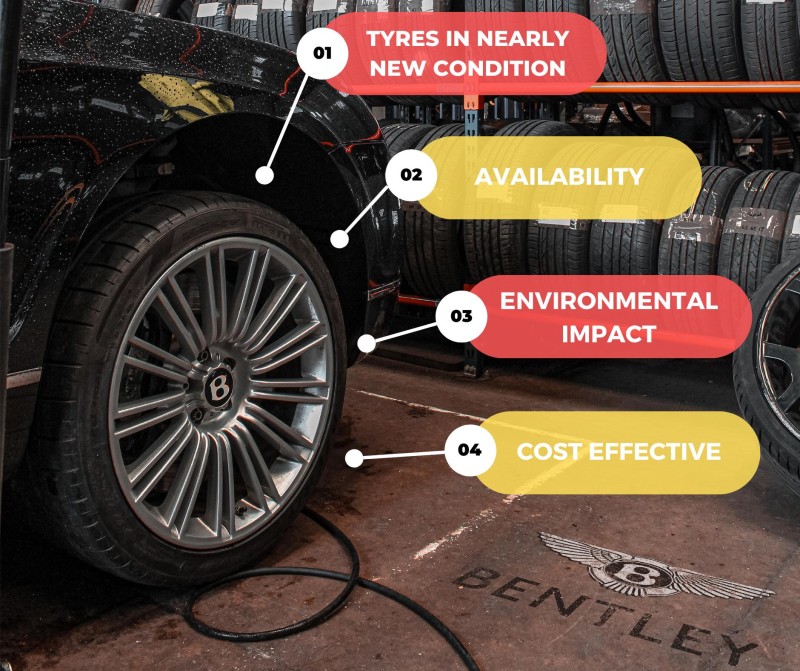
Buy big brands
Large corporations and vehicle manufacturers tend to care more about regulations – and ultimately their image – than a back-street garage does. Buying from a brand you can trust is a good way to ensure the part-worn tyre you get is built to a recognised standard.
Buy in bulk
Driving on a used tyre which doesn’t match the other three is not the best idea. Buying used tyres in a pair or a set can be advantageous, as you can ensure that both tyres on an axle are matching.
Check tread wear
A new tyre should have a tread of roughly 8mm. When the tread wears down to between 2-3mm, this is the point where most industry experts recommend seeking a replacement. A tyre which has hardly been used should guarantee plenty of mileage – look for those which are nearing 8mm depth and evenly worn all the way round. Make sure the original grooves are clearly visible, and there are no lumps or bulges internally or externally. None of the ply or cord should be exposed.
Check sidewall damage
After tread wear, you should check the sidewalls for scrapes, cuts, eroded rubber or any signs of previous damage. Damage on the sidewalls can indicate a fundamental problem with the tyre as a whole, so be sure to investigate the internal sidewall as well.
Check for repairs
Tyres which have been punctured in their previous life are often plugged with rubber to seal against any leaks. There’s nothing wrong with these repairs, in principle. However, visible repairs could indicate a deeper problem limiting the tyre’s maximum speed rating or overall effectiveness. If you see one of these indicators, check the interior of the tyre. You may unearth structural damage to the tyre belts, a definite deal-killer.
You have been (part) warned!
Part-worn tyres remain controversial within the industry, and not without reason. Knowing the source of your tyres, and their history, is increasingly important for anybody looking to buy second-hand. While there will always be a need to check the quality of the tyres you’re buying, this extra responsibility can be shared by going to a company you can trust, like ASM Auto Recycling.
ASM Auto Recycling puts tyre quality first
The tyres sold by our team at ASM are in virtually mint condition, more nearly-new than part-worn. When scrapping a vehicle, we tend to source our tyres from unused spares instead of those which have been on the road.
Our staff are professionally trained and accredited to judge the quality of any tyre, which is why we check tread depths, tyre pressure and more before selling to any of our customers. We won’t ‘tyre’ of giving you great service!
]]>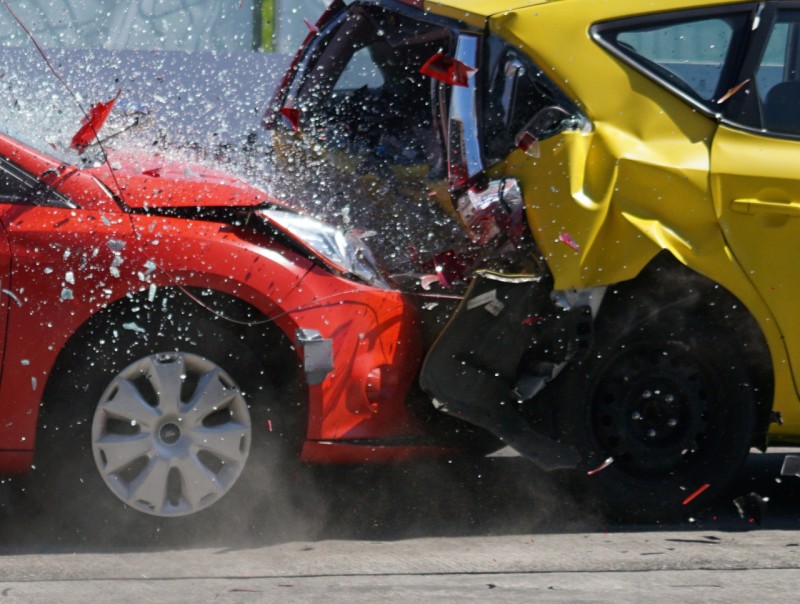
If you’ve ever bought a brand-new car, the chances are that the dealership has tried to sell you GAP insurance. But what is GAP insurance, and do you need it? If you do, where should you purchase it from?
Here we’ll examine some of the different types of Gap insurance available, look at when drivers should consider buying Gap insurance, and other important information for you to consider.
What does GAP insurance stand for?
The ‘GAP’ stands for ‘Guaranteed Asset Protection’. There are several different types of policy but, largely, this type of insurance is designed to complement traditional comprehensive car insurance. In the event of an accident or theft leading to the car being written off, GAP insurance covers any shortfall between a car’s purchase value and the value of an insurance pay-out.
Many insurers compensate customers to the current value of their vehicle – as opposed to its value when the vehicle was bought. This can mean drivers finding themselves out of pocket if they have bought the car on finance or want to replace it with a car of the same original value.
Who should you buy GAP insurance from?
As we have mentioned, dealerships are where most drivers are sold GAP insurance. It often feels like one of those add-ons that dealerships use to make commission. But motorists do not have to buy from a dealership.
Dealerships also have to wait for two days after selling a vehicle before they can sell a customer GAP insurance, unless the customer waives the right to this cooling off period.
Shopping around and getting quotes from insurance companies is usually the cheaper option. A survey by What Car revealed that GAP insurance offered by four car dealerships was in every case significantly more expensive than an insurance provider. In one example the same policy cost £359 from a dealership and £141 from an insurance company.
Is GAP insurance a good idea?
It really depends on what your attitude to risk is. Only 26% of new car buyers buy GAP insurance, and just 1% of cars are ever written off. But brand-new cars lose up to 40% of their value in their first year, so should you be unlucky and need to replace your vehicle then GAP insurance will cover that sizable amount of money.
If you financed your car with a loan, and the loan to value ratio is high, then the shortfall you could be exposing yourself to in the event of a write-off will be significant.
Is GAP insurance mandatory?
GAP insurance is not compulsory, unlike car insurance. The chances of needing GAP insurance are very low. Many people may not even know that GAP insurance exists, and most drivers take the risk and don’t take out a policy.
You also shouldn’t need GAP insurance in the first year after you have bought a brand-new car, because car insurance policies will usually cover any losses incurred in the first 12 months of ownership.
What are the different types of GAP insurance?
Finance Gap Insurance
Finance Gap insurance is one of the most basic product offerings available. It helps the owner of a written-off vehicle to cover any remaining loans or outstanding payments from the date of purchase.
Return to Invoice Gap Insurance
This type of insurance is designed to bolster any insurance claim pay-outs, bringing the total amount of money reimbursed in line with the amount the customer paid for the vehicle (as written on the invoice).
Vehicle Replacement Gap Insurance
Like Return to invoice Gap insurance, but in reverse, this product helps motorists to bridge the gap between car insurance pay-outs and the cost of replacing the written-off vehicle with a new one. This product is also bundled with Finance Gap insurance on a regular basis.
Return to Value Gap Insurance
This product is very similar to return to invoice Gap insurance. However, rather than helping motorists get what they paid for their car, this type of insurance aims to make up the difference between the pay-out and the value of the vehicle when the insurance policy was first purchased. It is especially useful for owners of second hand or especially long-lived cars, but usually offered to cars which are fewer than seven years old.
Lease Gap Insurance
In cases where motorists leased their car rather than buying, Lease Gap insurance covers any fees and costs associated with the remainder of the contract or any premature cancellation of lending agreements.
Is GAP insurance worth it on a second-hand car?
It very much depends on how old the second-hand car is. The older the vehicle, the slower the rate of depreciation, and if you are coming to the end of a finance deal there will be less of a shortfall to cover. You get the most value for money from Gap Insurance on cars in their first few years on the road, because that is the period with the steepest falls in value.
Find salvaged vehicles and high-quality parts at ASM
If you have been involved in an accident or your car has been written off, you may be on the hunt for a replacement vehicle or spare parts. Here at ASM Auto Recycling, we can help. We ensure that only the best spare parts are kept at our sites, increasing your chances of getting a good deal on insurance on any repaired or auction-bought cars, vans or bikes. Our salvage auctions offer the chance to purchase vehicles at 50% savings on dealership models.
]]>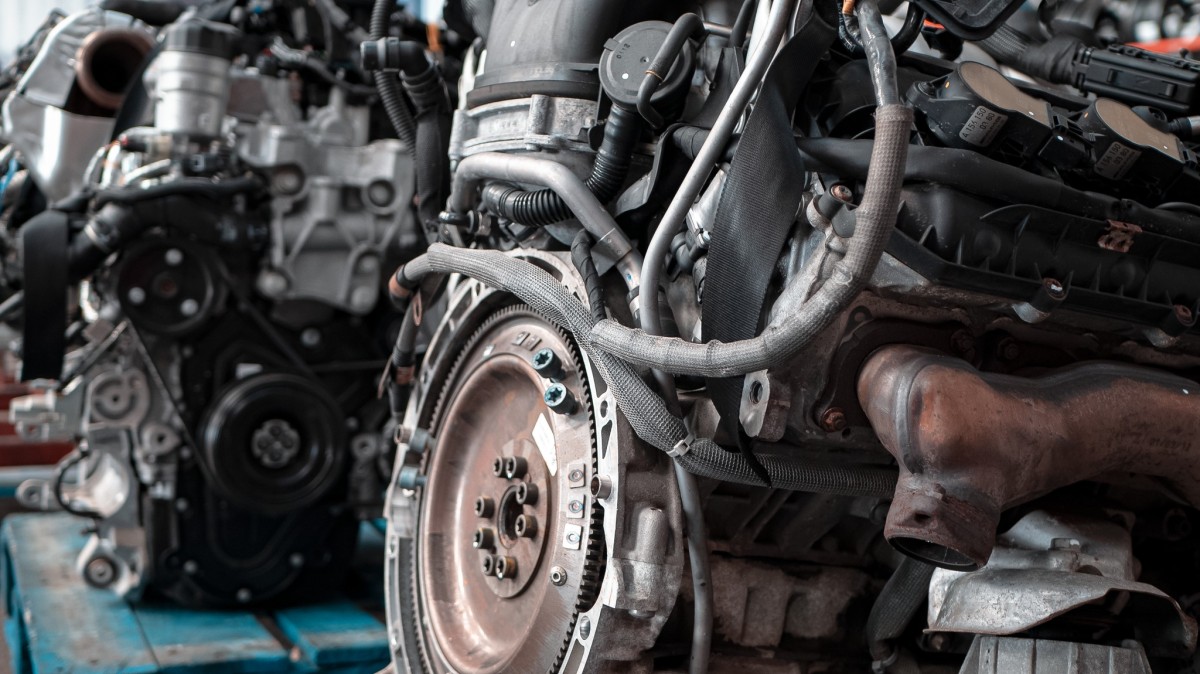
A car engine is one of the most important components of a working vehicle. Without a working engine, your vehicle is a motionless chassis. Unfortunately, there are engines that stop functioning either due to malfunction or a road accident.
So, when the time comes, how do you find a replacement engine? You might be surprised to learn that second hand engines are a viable alternative to a new engine.
What engines are compatible with my car?
Understandably, car engines aren’t completely interchangeable. This doesn’t mean that there isn’t some crossover: two slightly different car models released by the same company within a five-year period might actually be able to use the same engine.
The first question you need to ask is: is it a long or short block engine?
These two variations can actually be found on what is otherwise the same engine, so it’s important to know the difference.
A long block engine includes the full works when it comes to parts: cylinder heads, camshafts, valves, valve springs and an intact head gasket. As such, long block engines can normally be installed quickly and easily and will make a suitable replacement for any engine that’s been written off.
A short block engine, on the other hand, is designed for cases where the full engine doesn’t need replacing; just parts of it. A short block engine is usually much cheaper as a result.
Second hand replacement engines
Second-hand car engines can sometimes be more reliable than brand new models.
It’s the greener thing to do. By repairing your vehicle and purchasing a second-hand car engine – rather than sending it for vehicle dismantling – you are ensuring a considerable amount of junk materials do not enter the waste and recycling stream.
It’s also affordable. A brand-new engine can be extremely expensive; often costing more than an entire second-hand vehicle. A refurbished car engine has already depreciated in price and ultimately costs less.
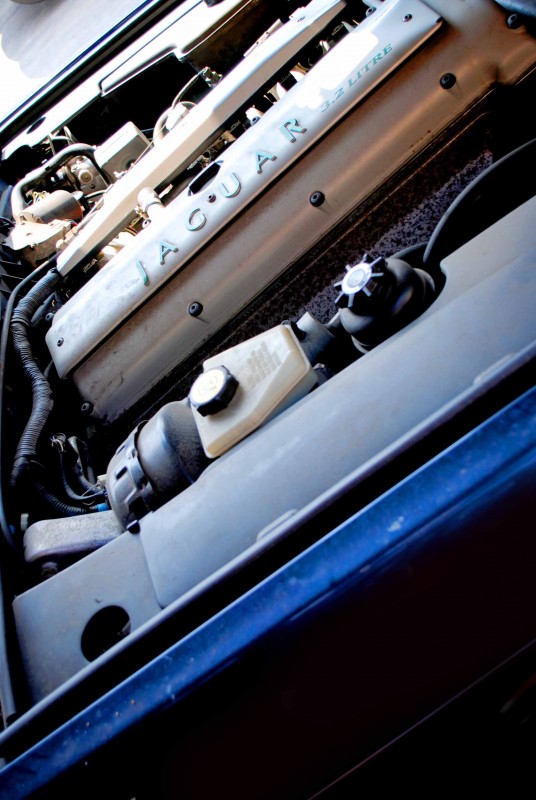
Parts that should be included in a second-hand car engine
If you know what you are looking for, it is a good idea to check that the replacement engine you are buying has all the parts you would expect:
- Intake and exhaust valves
- Spark plugs for the engine’s combustion
- Pistons
- Cylinder sleeves to house the pistons
- Piston rings to seal the piston and cylinder
- Crankshaft to move the pistons
- Connecting rod to connect the crankshaft to the piston
- Sump reservoir for oil storage
Tips on car engine replacement
‘What engines are compatible with my car?’
Before you start searching for the right type of engine for your car, ensure you take note of your vehicle identification number. You can usually find this printed under the plastic trim on the drivers’ side window, or on the chassis. Other information about your car you need is the engine code and production date to ensure any refurbished engine is compatible with your car. At ASM Auto Recycling you can enter your registration number to see refurbished engines and other parts matching your vehicle.
Opt for the engine with the lowest mileage
Although second-hand engines can be more dependable than brand new engines, it is still a good idea to find an engine with the lowest possible mileage. These will have minimal wear and tear and are likely to last as long as the rest of your vehicle.
Seek a used engine with an initial warranty
When it comes to buying any type of second-hand car part, you should always opt for one with an extended warranty. The 90-day guarantee we offer on all our refurbished car parts gives our customers certainty, at least in the short term.
What is the reconditioned engine’s history?
Before you part with your money, ask for a full service history of the car the engine was once used in. Ask if any individual parts have been replaced and check how many miles the engine already has under its belt.
What else should you look for with a replacement engine?
Check out the exterior housing
It is important to inspect the engine’s shell to make sure there is not too much wear and tear. If you’re going for the second-hand approach – which is cheaper – there will be some, but if there’s too much it can be a warning sign.
You should also check for any cracks and make sure that all of the nuts and bolts are securely fastened. Be as thorough as you can – along with the brakes, the engine represents the most important part of running a safe vehicle.
Is the engine salvaged or rebuilt?
Salvaged engines have been taken from a car that’s either been in an accident or is too old to use. In some cases, salvaged engines can be in great condition: they might have only been on the road for a few years and are often very easy to evaluate.
Rebuilt engines can be tougher to get a handle on and it’s recommended to only buy one from a credible source.
Find an engine for your car and other parts at ASM
With a wide range of reconditioned engines for sale from ASM Auto Recycling, we can help with your search for a replacement engine for your car. In our used car parts store you can search by your car registration, make and model and find all the parts that we have available for your vehicle. Plus, we offer a 90-day parts peace of mind guarantee for fitting used replacement engines or car parts purchased from ASM.
]]>
Have you had your vehicle valued for scrappage recently? Was the price you were given higher or lower than what you were expecting?
There may have been quite a bit of difference in the price you would have received only a few months ago. That is because steel, aluminium and copper dominate the scrap metal market, and this is the stuff that cars are made of more than other metals. The scrap prices for end-of-life vehicles are likely to feel the effects of fluctuations in scrap metal prices more keenly than other products.
So yes, the scrap value of steel does have a major impact on the amount of money you might be able to get from your car as scrap. Like the price of oil, certain countries exert a major influence over scrap metal prices. They are also affected by world events. For example, the performance of the Chinese economy will have a huge influence on European steel prices. Turkey is the world’s largest importer of scrap metals, and so a reliable indicator of global steel values is the Turkish TSI index.
How can I ensure I get the best price for my scrap car?
We are committed to providing customers with the very best possible price for your unwanted or end-of-life vehicle.
Vehicle recycling firms like ASM will pay more money for scrap metals that are considered ‘Grade 1’. High-grade metals are those with no associated alloys found within the material. In addition, the metals should have no signs of corrosion and be of a minimum size and diameter to be accepted.
‘Grade 2’ scrap metals are often made from alloy(s) alongside the primary metal you wish to scrap. Even 1% alloys in a material will see it handed a Grade 2 status. These materials must also be clear of foreign contamination to achieve the best possible prices.
How are scrap cars valued?
Today, the vast majority of scrap car prices in the UK are given to vehicle owners per tonne. Be mindful that the value of scrap metals fluctuates daily, so scrap car values can change day to day. By keeping a keen eye on trends in the value of scrap metals you can see the right time to cash in on your unwanted vehicle. The London Metal Exchange is the most genuine indicator, but at ASM we can always tell you the daily prices over the phone too.
The scrap metal marketplace can be affected by a range of factors, from the overall demand for new metals, to the performance of the construction industry, to the location of individual scrapyards.
All fees for your scrap car are now paid via cheque or electronic bank transfer. Since 2013, it has been illegal for anyone to be paid in cash for their scrap vehicle — a move designed to prevent thieves from stealing vehicles off driveways and selling them at scrap yards for cash, amongst other metal theft.
Is steel valuable?
Steel will get a fair price but is generally the least valuable of the main types of scrap metal, behind lead, aluminium, titanium, brass and copper. This is because it is very widely available. Stainless steel is more valuable, and a lot of automotive parts are made of stainless steel.
What are the benefits of vehicle recycling?
Vehicle dismantling is the most environmentally friendly way to scrap your vehicle. It’s a process where salvaged car parts are removed from the shell of the vehicle, cleaned and tested for use in other second-hand vehicles. Our used car parts store includes over 100,000 used car parts available for purchase. As part of a vehicle’s dismantling, all of its potential toxins such as fuels, oils and brake fluids are removed as part of the de-pollution process, in line with the European End-of-Life Vehicle (ELV) Directive.
Each year, hundreds of thousands of end-of-life vehicles are dismantled and recycled in the UK alone. If your vehicle has given up the ghost or is sitting unwanted on a driveway, get an instant quote on what we will pay. If you have no way of getting the vehicle to ASM Auto Recycling, we will arrange collection from your home at a time and date to suit you.
]]>At ASM we have always championed the value in used car parts and how motorists can save on significant maintenance costs by simply buying second hand. It’s also beneficial for the environment because you will be making the most of your salvage parts, from end-of-life to damage-repairable vehicles. You’ll be contributing to a more circular economy.
Scrap Your Car
Best prices paid on any car!
All cars wanted, including MOT failures and non-runners. We offer prompt collection and immediate payment.
Have ever wondered what the most valuable car parts are? What car parts are most popular? Read on and we’ll explain what parts of your car you could cash in on with the help of a local scrap yard. However, do consider that if you remove parts from your car its total value can be worth much less.
What car part is worth the most?
The engine
The most valuable of car part is often the engine, understandably. A completely new engine can be the most expensive of maintenance jobs, but a dodgy engine may end up getting your vehicle written off altogether. So, if you are scrapping your car and no longer have use for the engine, it is a great part to be able to cash in on.
If your engine is still running efficiently, ask a mechanic for help before you sell it. They will remove it, drain it of any fluids and transport the engine safely to a trusted local scrapyard. Engines can still bring value even if they don’t work any longer. The aluminium they contain is a valuable scrap metal and can be sold to a local scrap metal dealer.
What car parts are easy to sell?
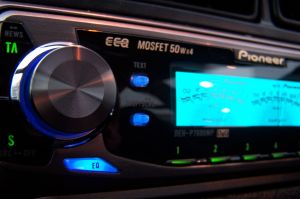
Car stereo and GPS
Two of the easiest parts to sell are car radios and satellite navigation system (GPS) systems. They are less likely to be damaged because of where they are in the vehicle. They also do not corrode or wear like a moving part or parts that are exposed to the elements. They are easy to remove too, so you won’t have to wait around long for your money.
What other parts can you sell?
Catalytic converters
Often the cause of vehicle thefts in the UK, catalytic converters are a big-money salvage car part. They are considered valuable because of the precious metals they contain – such as rhodium, platinum and palladium. They too are easy to remove, which is what makes them a prime target for criminals.
Catalytic converters are also a mandatory part of modern exhaust systems, filtering and lowering the toxic fumes emitted by vehicles. If you still have a functioning catalytic converter they will be in extremely high demand.
Air conditioning units
Any parts from an air conditioning unit are generally very valuable, whether they’re from a car or elsewhere. Compressors are often the most expensive part to replace, with the cost often running well into hundreds of pounds. Even filters and condensers can also cost upwards of £100 to purchase and install, so selling them to a scrapyard could make you a handsome amount of money.
Air Bags
There is also an enormous demand for air bags. When you consider the number of air bags recovered from accident write-offs and multiply that by the lawful requirement of two air bags per vehicle then you can appreciate the market value they have. They can, depending on the make and model, also be very costly to replace. This makes salvaged air bags far more alluring, which is reflected in the amount a scrapyard will give you for them.
Bumpers and exterior parts
Exterior parts are also very popular from damage-repairable vehicles, simply because we all have a prang once in a while. They’re also some of the easiest parts to remove from a vehicle. Some of the more common external salvage car parts that are highly sought after include the front bumper, the front bonnet and the rear bumper, all of which can take a bang and are vulnerable on a daily basis.
Find high quality recycled parts at ASM
We have an extensive range of over 100,000 recycled high quality vehicle parts at ASM. From big heavy engines all the way to spark plugs and used car tyres. If you’re looking for a high-quality, but affordable, car part simply search by your registration, make or model. We can deliver items to you or you can collect the parts in person from our Thame depot.
]]>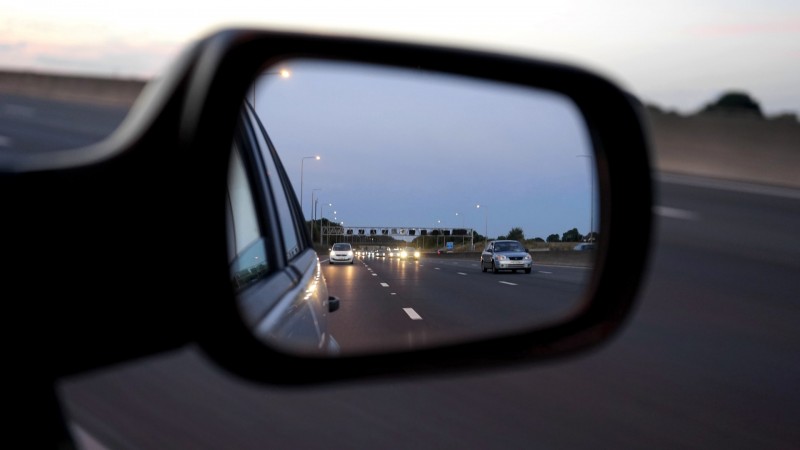
Wing mirrors are an important part of a vehicle. They enable you to drive safely and enjoy full awareness of all other vehicles, objects, cyclists and pedestrians around you. If you are driving with a broken wing mirror, even easy driving manoeuvres that we often take for granted can become exceptionally dangerous. Driving without two fully functional wing mirrors places both you and other road users at great risk.
But what should you do if you have a broken or damaged wing mirror? Should you try to fix it yourself, or get a replacement? Find out with our comprehensive guide to replacing a wing mirror.
Replacing a wing mirror
It’s now incredibly easy to source a replacement for a broken or damaged mirror. There’s no reason whatsoever for driving with poor peripheral vision at the wheel. It’s also worth noting that if you enter your vehicle for its MOT with a broken or faulty wing mirror it will receive an instant fail. Replacement mirror parts are widely available both new and second hand.
At ASM Auto Recycling we offer three different types of wing mirror replacements that you can purchase:
- Full wing mirror units
- Replacement mirror glass
- Replacement mirror covers
These are available from our used car parts service, which now has over 100,000 searchable spare parts from manufacturers ranging from Alfa Romeo to Volvo.
Full wing mirror units
In the event that you need a complete replacement, it is important to know what type of mirror you have. In order to get the right unit, you’ll need to be aware of which features your replacement wing mirror unit needs.
Manual, electric or cable?
Was your original mirror a manual one that required you to move the mirror glass by hand to the ideal position? Or was it an electric mirror, which could be adjusted using a button or joystick inside the vehicle? Or was your original mirror a cable mirror that required you to adjust the mirror glass using a manual lever?
Heated mirrors
Some mirrors have heating elements in them to keep mirrors free from ice, fogging and dimming in the colder months. If you’re unsure of whether your mirror was heated, look for a heating symbol on or close to the electric mirror adjustor. Alternatively, remove the old glass mirror from the unit to discover if there are electric cables attached to the rear of the glass.
Folding mirrors, puddle lamps or inbuilt indicators
Folding mirrors automatically move inwards when a vehicle is parked and locked. Some cars will have mirrors fitted with small lights, known as puddle lamps, which light the floor around the front doors when it is unlocked. Was your mirror fitted with an inbuilt indicator?
Replacement mirror covers
It is very easy to damage mirror covers. They can easily snap off on the road if you get too close to another vehicle, or if your parked car is the target of mindless vandalism.
If the housing is cracked or snapped open, exposing the internals of the mirror, you can find mirror covers that are the same colour as the rest of the body of your vehicle. If the replacement is a neutral colour, you can always get it sprayed to match the rest of the vehicle.
Replacement mirror glass
In the event that your mirror glass is cracked but the rest of the unit’s housing is in good condition, it’s possible to carry out a simple replacement of the mirror glass.
You can search for mirror units, mirror covers and replacement glass through our used car parts service.
Should you replace a wing mirror unit yourself?
We would advise against replacing wing mirrors yourself, unless it is just the glass that needs replacing. It can be very fiddly and turn into a bigger job than you expected. To replace the complete mirror unit will involve removing the door panel, taking screws off and working around electrical cables.
How to replace wing mirror glass
Ensure you are aware of whether you need a replacement offside (driver side) or nearside (passenger side) mirror glass. Also check whether your wing mirror glass is convex (curved out to provide a wider perspective) or flat.
Firstly, you will need to lever the broken glass, so it unclips itself from the mirror housing. Check for any broken tabs or clips. Taking your new mirror glass, attach any wires that are needed for heating or indication, and align the glass with the clips that will hold it in place. Pressing firmly down, the glass should click into place.
Readjust the mirror position so it is in optimum position for your sightlines when driving.
Should you replace a broken wing mirror with a second-hand part?
It is perfectly acceptable and safe to replace your broken wing mirror with a used mirror from another vehicle. At ASM Auto Recycling all our spare parts are cleaned, tested and covered by our 90-day guarantee.
With our used car parts service, you can find all the parts our yard stocks for your make and model of vehicle. Buy them online and get them delivered or call our parts department and collect in person from our Thame depot.
Replacing a wing mirror at ASM
Replacing a wing mirror is easy at ASM Auto Recycling. You can find mirror units, replacement mirror glass and mirror covers via our used car parts search engine, saving you up to 70% on main dealer prices.
]]>What Does This Mean for You?
For our valued customers, this procurement means access to a vast inventory of genuine Land Rover, Range Rover, and Jaguar parts at competitive prices. Whether you’re looking for a specific engine component, body part, or interior fixture, this haul of salvage flood-damaged cars ensures that we will now have a comprehensive selection of parts available for a wide range of models. Our dedicated team of professionals meticulously inspects and salvages parts to guarantee their quality and performance.
Hear from our Operations Director, Chris Morgan:
“Given the well documented problems regarding lack of parts availability and main dealer back-order issues relating to many manufacturers – including Jaguar and Land Rover – this consignment has provided an unprecedented opportunity for a vehicle recycler to supply prestige marque green parts back into the UK body shop repair network on a significant scale. The symbiotic relationship between the vehicle recycling sector and the insurance repair network has undoubtedly gained momentum in recent years and we hope that this will further help to consolidate that growing association”.
Commitment to Sustainability and Quality.
ASM Auto Recycling is a proud member of the e2e network and is widely recognized as one of the UK’s leading vehicle recycling operations. Our state-of-the-art 20-acre facility in Thame, Oxfordshire, processes over 35,000 vehicles annually. Additionally, we have three satellite sites located in Hertfordshire, Bedfordshire, and Buckinghamshire.
Our extensive inventory includes over 3,000 collision repair panels in stock, along with more than 50,000 green parts available for next-day nationwide delivery.
Get in touch today.
To find out more about ASM’s green parts proposition, please contact either Chris Morgan (chris at asm-autos dot co dot uk) or Chris Whytock (chris dot w at asm-autos dot co dot uk).
Equally, if you’re interested in purchasing any Jaguar and Land Rover car parts, check out our dedicated Jaguar, Land Rover and Range Rover pages for more information.
]]>